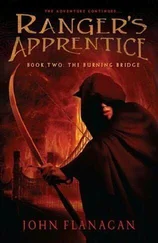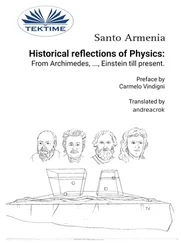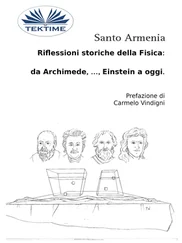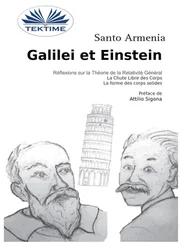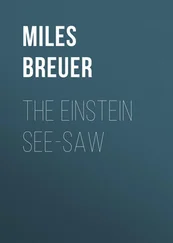“To understand Jake, you have to realize that a certain style of argumentation involving very fast interchanges is considered a high art in Taiwan. It’s a kind of verbal karate. Jake was probably the smartest kid in Taiwan when he was growing up, and he naturally learned how to outargue anyone he encountered.
“When he was doing his Ph.D. working at SLAC, it must have been a terrible culture shock for him. His haranguing tricks from Taiwan, his oratorical style, and his histrionics didn’t work at SLAC. Everyone just thought he was a crazy Chinese guy and paid no attention to him. But Jake is not stupid. Over a period of time he watched the masters carefully and discovered the key to winning arguments at SLAC, and he began to gain recognition and move up in the pecking order.”
And what was his trick?” asked Alice. “It sounds useful.
“The key to winning arguments at SLAC,” said George, “is to always be right. And to be able to prove that you’re right so conclusively that no one can prevail against you.”
“Oh,” she said, disappointed. That didn’t sound like a useful trick at all. “But if he’s always right, why do you argue with him?” she asked.
“Because,” said George, “the only time Jake is consistently right is when he’s making a public performance. The rest of the time he’s often wrong. He learns to be right by soliciting arguments from people who, at the time, know more than he does.”
“Then I don’t understand what your argument with him was about,” she said. “It wasn’t a public performance, and he was wrong.”
“With Jake,” said George, “it’s an iterative process, like breaking a horse. You always lose the first argument. But you have to introduce him to the idea and give him time to get used to it. He can’t stop me from looking at the Snark, but I had to let him know about it and that I intend to investigate it, whether he likes it or not.”
“Oh,” said Alice, feeling confused. George lost, but he won?
“Jake isn’t our problem,” said George. “The Snark is. Roger Coulton suggested that the thing might still be around, and now I need to figure out where it might have ended up. Want to watch?”
“Sure,” said Alice.
ALICE PUT ON THE MAGIC GLASSES AND SETTLED BACK in the recliner. “I think this ‘telepresence’ business is all just a ruse to allow you to lie around on a soft couch all day while you’re pretending to work,” she said.
“You’re not the first person to suggest that,” said George’s voice in her earphones.
She was getting the hang of adjusting the glasses. George had explained that she would have an independent “body” in the interface, but that her position would be servoed to his so they would move together.
As her eyes adapted to the lower light level, she saw that she was standing at the corner of a magnificent building, a Greek temple that appeared to be filled with amazing statues. She was reminded of the Loggia dei Lanzo on the Piazza della Signoria in Florence, but this building was huge. It stretched away as far as the eyes could see. Curiously, over the entry stairway were carved and gilded architectural letters that read LEM DATA ANALYSIS SYSTEM- VIRTUAL DESKTOP — VERSION 2.1 A, followed by a modified quotation from Dante.
George’s voice spoke next to her. “Alice, can you hear me okay?”
“Sure,” she said and turned to see that a wireframe figure with George’s face stood next to her. “Where are we? What is this place?”
“Oh,” George said, laughing. “I should have explained. This is our ‘desktop,’ our locational interface. Pietro, one of the programmers, had a dual college major in computer science and classical art history. One morning I connected to the system, and here it was in all its glory. He took statues from a giant classical sculpture database and used random combinations of statue elements filtered by an ‘aesthetics’ expert system developed by the Harvard Department of Fine Arts.”
“It’s beautiful.”
“As it turns out,” George continued, “associating computer files and operations with physical locations in the Palace does seem to make a good computer-human interface.
The operations and locations feel very natural and stick in the memory. Pietro claims the interface is based on a classical scheme for memory improvement developed by the Greeks.”
“Are there more of these locational interfaces?” asked Alice, wishing for her notepad. “I’ve never heard of them before.”
“As far as I know,” said George, “it’s unique to the SSC. But it’s become rather a local fad to see who can come up with the most bizarre locational interface. The SDC programmers designed one based on the works of Lewis Carroll, and I’m told there’s a new one at the EA-4 experiment that’s supposed to be derived from the H. P. Lovecraft mythos.”
The view of the Palace began to change. They were moving through the vast building. The statues were passing faster now. So fast that she could not comprehend one before the next appeared. They passed gardens, open areas, belvederes, glittering fountains, and elaborate staircases leading up or down. Finally the view stopped before a goat-headed man. Alice noticed that the words SNARK TALK TO JAKE! were carved in neat architectural letters into the white marble pedestal of the statue.
“Here we are,” said George. “This is the icon for the event I need to measure.”
Alice saw George’s phantom hand, a representation of curving connected yellow polygons and lines, reach out and touch the pedestal. The words TALK TO JAKE vanished from the inscription. Then the hand moved to touch the foot of the statue…
… there was a pop sound and she floated in a black night illuminated by a spiked flower pattern constructed of many-colored curving lines.
“This is the Snark event,” George said. “Its collision products passing through the LEM detector made this pattern.”
“It’s like a neon-tube sculpture I saw once,” she said. As she watched, the phantom hands dimmed each colored line of the pattern until only one remained. It was a straight line that glowed with a violet color, and at random intervals along its length were blossoming bunches of shorter red lines.
“Here,” said George, “is our Snark. It has a large electric charge and a very large mass. It came out of the vertex, but it took no energy or momentum from the collision.” The phantom hand touched one of the bunches of red along the violet line. “See these? They’re called jets, bunches of energetic particles that are made when a quark or a gluon is ejected by a collision.”
“I’ve read about them,” said Alice.
“They always come from the point of collision. Never are they found at random spots along a trajectory like this.”
“What? Never?” Alice quoted.
“Well, hardly ever,” George responded.
She imagined that he must be grinning.
“Roger Coulton suggested that they’re from a process he called ‘color ionization.’ Somehow the Snark is losing energy by separating quarks and antiquarks along its path and making them into forward jets, just as a normal charged particle loses energy by separating electrons from atoms.”
A frame of yellow lines, which Alice took to be an outline of the LEM detector, now surrounded them, and they swam in the space it enclosed. “What I’m trying to do,” George said, “is estimate where in the detector the Snark stopped. Ah!” A region at the edge of the detector suddenly contained a sprinkling of colored line segments. The viewpoint shifted until Alice could see that one of the segments, a fat red line, was a direct extension of the violet line that still glowed near the center of the device. A dashed yellow line winked on, connecting the violet line to the red.
Читать дальше



